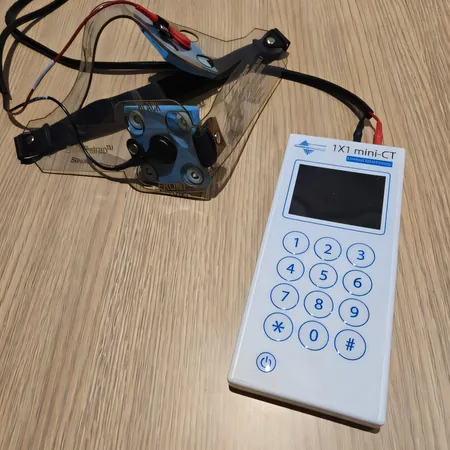
Groundbreaking Brain Stimulation Therapy Offers Hope in Battling Post-Stroke Fatigue!
2025-03-24
Author: Mei
Introduction
A revolutionary approach utilizing painless and non-invasive electrical stimulation to the brain is emerging as a potential game-changer in alleviating fatigue among post-stroke patients. However, the intricacies of this treatment continue to puzzle scientists.
Recent Study Findings
A recent pilot study conducted by researchers at Syracuse University’s Department of Communication Sciences and Disorders has unveiled encouraging outcomes regarding transcranial direct current stimulation (tDCS) and its effects on attention and fatigue in stroke survivors. The peer-reviewed findings were detailed in the journal *Frontiers in Human Neuroscience*.
Study Overview
In this innovative study, ten stroke survivors, with an average age of 62.8, participated in two carefully structured sessions separated by at least three days. All participants exhibited post-stroke aphasia, a challenging language disorder caused by stroke-related brain damage.
Attention Assessment
Each session commenced with an attention assessment where researchers monitored brain activity using electroencephalography (EEG) and measured pupil size to gauge attentional focus. Participants then engaged in an attention-training exercise, receiving either genuine tDCS or a placebo, followed by a repetition of the initial attention evaluation.
Significant Findings
Hannah Rembrandt, the study's first co-author and a Ph.D. candidate in the Syracuse University Aphasia Lab, noted, “Enhancing attention can have a significant ripple effect on various aspects of life for these patients.” Understanding attention in post-stroke patients is vital, as it underpins essential cognitive functions such as memory, language, and strategic planning.
While the study produced mixed results, intriguing patterns emerged. Participants receiving real tDCS displayed significantly larger pupil dilation, typically indicative of enhanced attention levels. This dilation reflects activity in the locus coeruleus-norepinephrine (LC-NE) pathway, a crucial brain mechanism related to attention management. Researchers expressed interest in exploring pupil dilation as a potential physiological marker for tDCS effectiveness.
Surprisingly, despite the enhanced pupil responses, patients did not demonstrate measurable improvements in attention tests. Rembrandt speculated, “We believe the lack of attention improvement may be due to the limited number of treatment sessions. Previous studies indicate that tDCS is more effective when administered over multiple sessions.”
Fatigue Reduction
An exciting discovery was that participants who received real stimulation reported feeling less fatigued post-exercise compared to those who received the placebo. This suggests that tDCS may hold promise in mitigating fatigue by positively influencing specific neurological pathways.
Participants evaluated their overall fatigue on a scale from zero to 100 at both the start and conclusion of the session. Rembrandt pointed out, “Typically, after engaging in intense mental activity, we would expect fatigue to escalate; however, the fact that tDCS led to a decrease indeed showcases its potential to combat fatigue.”
Future Research
Looking forward, Rembrandt emphasized the need for further research to solidify whether this treatment could become a dependable tool in cognitive rehabilitation for post-stroke patients. As she aptly stated, “This study marks an important step toward deciphering the mechanisms through which this therapy assists individuals, and we are eager to advance our research and expand our understanding.”
Conclusion
This breakthrough could not only change lives but also pave the way for enhanced rehabilitation programs focused on improving the quality of life for stroke survivors. Stay tuned as this fascinating field of study continues to evolve!



 Brasil (PT)
Brasil (PT)
 Canada (EN)
Canada (EN)
 Chile (ES)
Chile (ES)
 Česko (CS)
Česko (CS)
 대한민국 (KO)
대한민국 (KO)
 España (ES)
España (ES)
 France (FR)
France (FR)
 Hong Kong (EN)
Hong Kong (EN)
 Italia (IT)
Italia (IT)
 日本 (JA)
日本 (JA)
 Magyarország (HU)
Magyarország (HU)
 Norge (NO)
Norge (NO)
 Polska (PL)
Polska (PL)
 Schweiz (DE)
Schweiz (DE)
 Singapore (EN)
Singapore (EN)
 Sverige (SV)
Sverige (SV)
 Suomi (FI)
Suomi (FI)
 Türkiye (TR)
Türkiye (TR)
 الإمارات العربية المتحدة (AR)
الإمارات العربية المتحدة (AR)